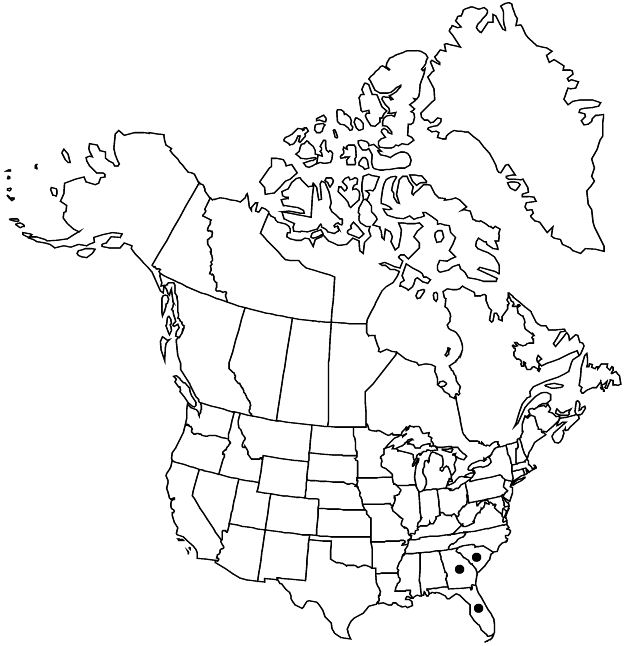Difference between revisions of "Crataegus flava"
Hort. Kew. 2: 169. 1789.
FNA>Volume Importer |
FNA>Volume Importer |
||
| Line 32: | Line 32: | ||
|distribution=Fla.;Ga.;S.C. | |distribution=Fla.;Ga.;S.C. | ||
|discussion=<p>Of conservation concern.</p><!-- | |discussion=<p>Of conservation concern.</p><!-- | ||
| − | --><p>Crataegus flava ranges from southeastern Georgia to South Carolina and northern Florida. Wild specimens of the typical form have not been seen since the early 1900s; vegetative specimens resembling this species were collected from the Florida panhandle in the early part of the present century.</p><!-- | + | --><p><i>Crataegus flava</i> ranges from southeastern Georgia to South Carolina and northern Florida. Wild specimens of the typical form have not been seen since the early 1900s; vegetative specimens resembling this species were collected from the Florida panhandle in the early part of the present century.</p><!-- |
| − | --><p>Crataegus flava has been widely confused with members of both ser. Apricae and ser. Lacrimatae (J. B. Phipps et al. 2007). Its stamen number has been wrongly credited as 10 or 20; stamen number in the type has recently been verified as 13–16 by S. Landrein (Kew). Recent collections with 13–16 stamens are unknown. The correct stamen counts are unusual for Crataegus, which are mainly narrowly dispersed around modes of 10 or 20, so this perhaps suggests, together with its somewhat flexuous twigs, and rarity, hybrid origin. Crataegus flava is similar to C. rubella, particularly in fruit shape and color as well as general glandularity, so its placement with members of sect. Intricatae seems appropriate. Lack of recent collections similar to the type suggests that modern attributions to C. flava may represent hybrids involving members of ser. Apricae.</p> | + | --><p><i>Crataegus flava</i> has been widely confused with members of both ser. Apricae and ser. Lacrimatae (J. B. Phipps et al. 2007). Its stamen number has been wrongly credited as 10 or 20; stamen number in the type has recently been verified as 13–16 by S. Landrein (Kew). Recent collections with 13–16 stamens are unknown. The correct stamen counts are unusual for <i>Crataegus</i>, which are mainly narrowly dispersed around modes of 10 or 20, so this perhaps suggests, together with its somewhat flexuous twigs, and rarity, hybrid origin. <i>Crataegus flava</i> is similar to <i>C. rubella</i>, particularly in fruit shape and color as well as general glandularity, so its placement with members of sect. Intricatae seems appropriate. Lack of recent collections similar to the type suggests that modern attributions to <i>C. flava</i> may represent hybrids involving members of ser. Apricae.</p> |
|tables= | |tables= | ||
|references= | |references= | ||
| Line 57: | Line 57: | ||
|publication year=1789 | |publication year=1789 | ||
|special status=Conservation concern;Endemic | |special status=Conservation concern;Endemic | ||
| − | |source xml=https://jpend@bitbucket.org/aafc-mbb/fna-data-curation.git/src/ | + | |source xml=https://jpend@bitbucket.org/aafc-mbb/fna-data-curation.git/src/8f726806613d60c220dc4493de13607dd3150896/coarse_grained_fna_xml/V9/V9_1000.xml |
|subfamily=Rosaceae subfam. Amygdaloideae | |subfamily=Rosaceae subfam. Amygdaloideae | ||
|tribe=Rosaceae tribe Gillenieae | |tribe=Rosaceae tribe Gillenieae | ||
Revision as of 18:13, 18 September 2019
Shrubs or trees, 50–60 dm. Stems: twigs straight or slightly flexuous, new growth color not recorded, glabrous, 1-year old purple-brown, older dark gray; thorns on twigs straight to slightly recurved, 2-years old purple-brown, slender, 2–3 cm. Leaves: petiole 1 mm wide, length 30–45% blade, winged distally, slightly pubescent, glandular; blade rhombic-obovate, 5–8 cm (in type material), base cuneate, lobes 1–3 per side, sinuous, sinuses shallow, lobe apex obtuse to acute, margins crenate to crenate-serrate, teeth gland-tipped, veins 3 or 4 per side, apex subacute to obtuse, adaxial surface pubescent young, glabrescent. Inflorescences 4–6-flowered; branches glabrous or sparsely villous; bracteole margins glandular. Flowers 16–18 mm diam.; hypanthium glabrous; sepals 4–5 mm, margins glandular; stamens 13–16, anthers purple; styles 3–5. Pomes dull orange, ± pyriform-oblong, 8–12 mm diam., glabrous; sepals on collar, ± reflexed; pyrenes 3–5.
Phenology: Flowering early Apr; fruiting Sep–Oct.
Habitat: Deep, sandy soil
Elevation: 10–100 m
Distribution

Fla., Ga., S.C.
Discussion
Of conservation concern.
Crataegus flava ranges from southeastern Georgia to South Carolina and northern Florida. Wild specimens of the typical form have not been seen since the early 1900s; vegetative specimens resembling this species were collected from the Florida panhandle in the early part of the present century.
Crataegus flava has been widely confused with members of both ser. Apricae and ser. Lacrimatae (J. B. Phipps et al. 2007). Its stamen number has been wrongly credited as 10 or 20; stamen number in the type has recently been verified as 13–16 by S. Landrein (Kew). Recent collections with 13–16 stamens are unknown. The correct stamen counts are unusual for Crataegus, which are mainly narrowly dispersed around modes of 10 or 20, so this perhaps suggests, together with its somewhat flexuous twigs, and rarity, hybrid origin. Crataegus flava is similar to C. rubella, particularly in fruit shape and color as well as general glandularity, so its placement with members of sect. Intricatae seems appropriate. Lack of recent collections similar to the type suggests that modern attributions to C. flava may represent hybrids involving members of ser. Apricae.
Selected References
None.